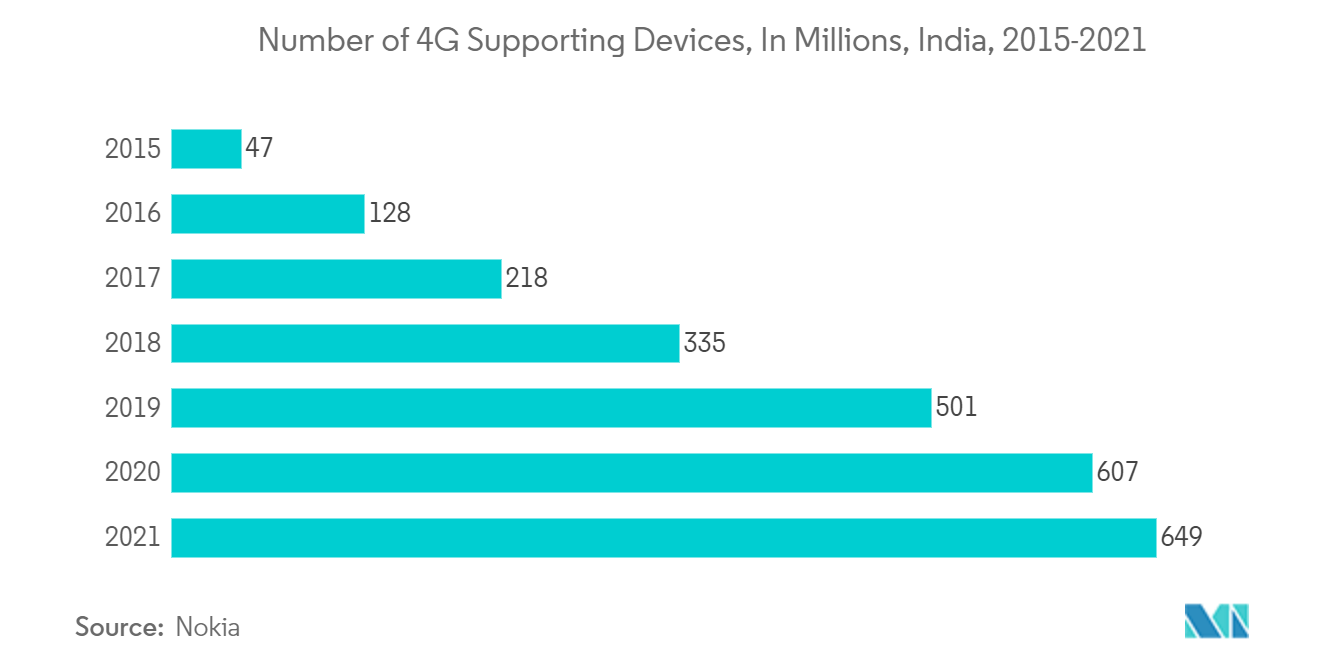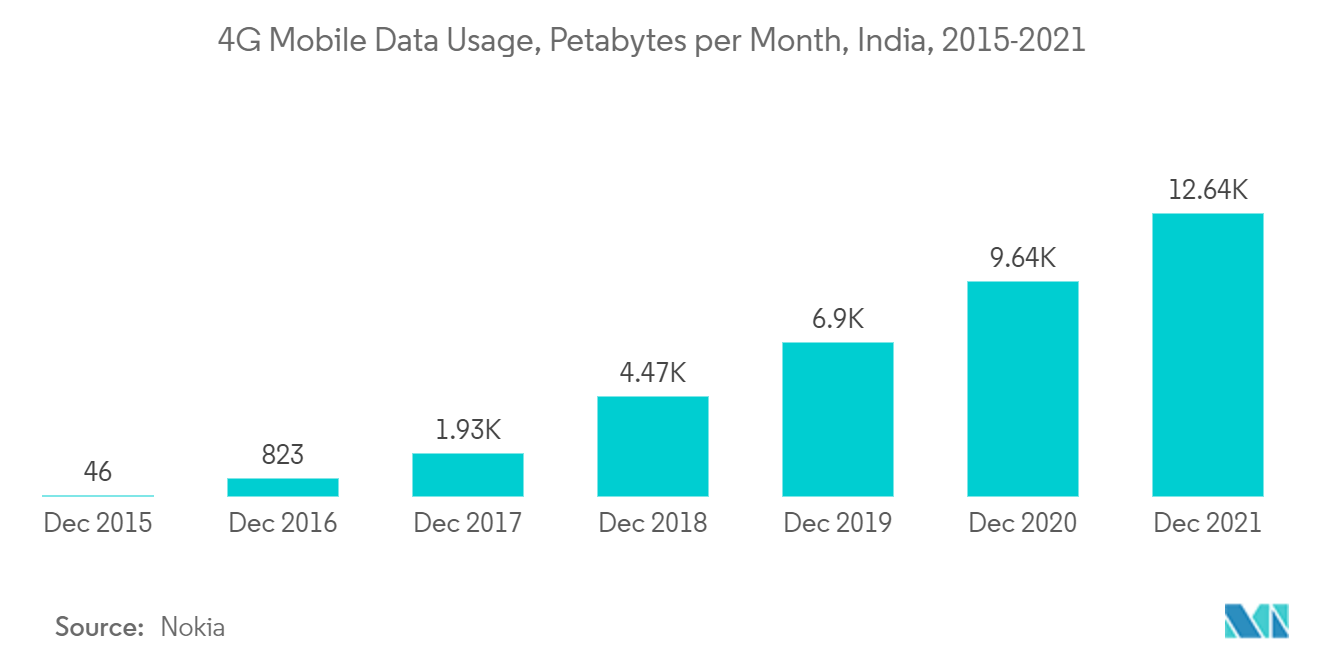Market Trends of India Telecom Industry
This section covers the major market trends shaping the India Telecom Market according to our research experts:
Increasing Penetration of 4G and Upgradation of 5G
- Affordable rates, expanding 3G and 4G coverage, the advent of 5G shifting customer consumption patterns, the government's initiatives to strengthen India's domestic telecom manufacturing capacity, and a favorable regulatory environment contributed to the industry's exponential expansion in recent years.
- In October 2022, Bharti Airtel ("Airtel"), India's significant provider of communications solutions, announced the introduction of Airtel 5G+ in many major cities across the country. Customers in Delhi, Mumbai, Chennai, Bengaluru, Hyderabad, Siliguri, Nagpur, and Varanasi can enjoy cutting-edge Airtel 5G Plus services in stages as the firm builds its network and completes the rollout.
- The Department of Telecommunications was allocated INR 84,587 crores (USD 11.11 billion) in the Union Budget 2022-23, of which INR 30,436 crores (USD 3.99 billion) was revenue expenditure (36% of total expenditure) and INR 54,150 crore (USD 7.11 billion) was capital expenditure (64.01% of total expenditure).
- The government approved the sale of IMT/5G spectrum to deploy 5G services throughout the country to accelerate digital connectivity. This auction was completed by July 2022, grossing USD 18.77 billion.
- According to the IBEF, increased mobile phone penetration and lower data costs would bring 500 million new internet users across the country over the next five years, offering new business opportunities.
- In March 2021, Vodafone Idea Ltd (VIL) claimed that the purchased spectrum in five circles would assist boost 4G coverage and capacity, allowing it to provide users with an "improved digital experience."

Growth of Data and Messaging Services
- In India, the demand for data and messaging services has been rising with an increase in telecom tower services across the country. For instance, The Indian telecom tower sector grew by 65% in the last seven years. Mobile towers increased from 4 lakhs in 2014 to 6.6 lakhs in 2021. Moreover, the number of mobile base transceiver stations climbed by 187%, from 8 lakhs in 2014 to 23 lakhs in 2021.
- Smartphones are a major source of data consumption and messaging services in India. According to the GSMA, India is on the path of becoming a significant smartphone market by 2025, with approximately 1 billion installed devices. It is predicted to have 920 million unique mobile customers by 2025, including 88 million 5G connections. 5G technology is expected to add USD 450 billion to the Indian economy between 2023 and 2040.
- The government focuses on increasing broadband network services, which will increase the use of Data. For instance, in July 2021, Bharat Broadband Network Limited (BBNL), on behalf of the Department of Telecommunications, issued a global procurement for the establishment of BharatNet in nine distinct packages covering 16 states during a 30-year concession period. The government would pay a maximum grant of INR 19,041 crores (USD 2.56 billion) as viability gap finance for this project.
- The Department of Telecommunications (DoT) formed a sixth-generation (6G) innovation group to drive the development of 6G technologies.
- Among the primary factors that lead to the segment's rise are the use of more than one device per user, high rates of replacement, and people transitioning from traditional phones to smartphones as prices drop.

